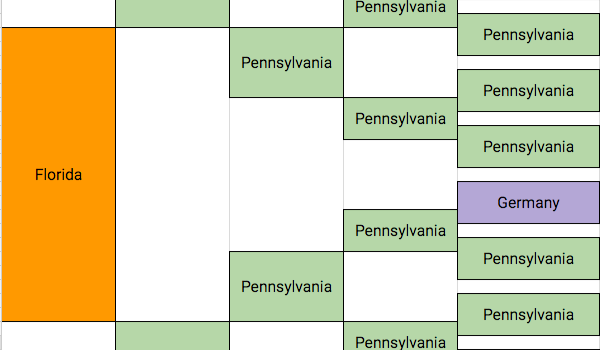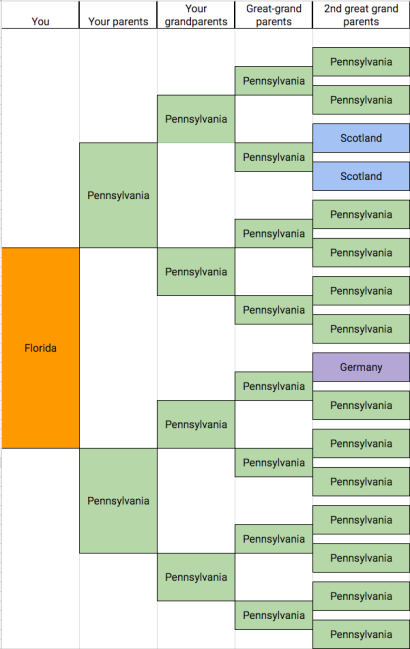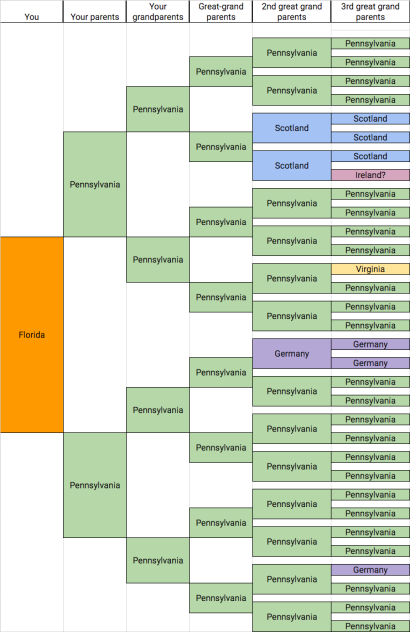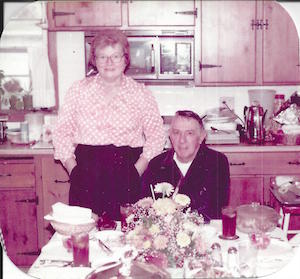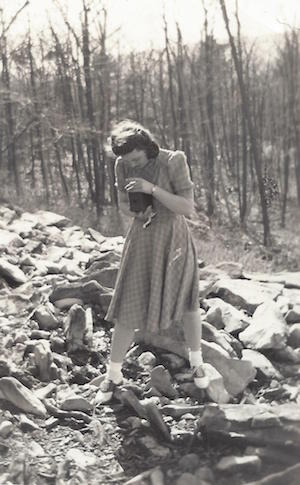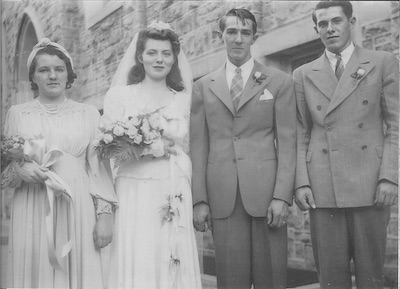In my last post regarding Abraham Huber, I learned that he was the son of John Huber from John and Christian’s last will and testaments. Based on those documents, I was able to create a simple outline of the family. Now I want to flesh that out a bit with information from census records.
We know that John and Christian lived in Providence Township. John died in 1862, his widow in 1890. Christian died in 1881. Based on this information I’m going to start with the 1880 census for Providence Township, Lancaster County, Pennsylvania.
1880 Census

Abraham’s household is located on the first page of the Providence Township records. His household includes:
- Abraham Huber, age 31
- Christian Huber, his uncle, age 79
- Margaret Huber, his mother, age 70
- Susan Huber, his sister, age 45
- Catharine Huber, his sister-in-law, age 29
- Emma Huber, his niece, age 11
- Tobias Huber, his nephew, age 9
- Susan Huber, his niece, age 6
- John Sheridan, a servant
The next household is also a Huber family, headed by John Huber, aged 76, and his wife Elizabeth, aged 70. This may be the “little” John Huber mentioned in the 1892 deed.
1870 Census
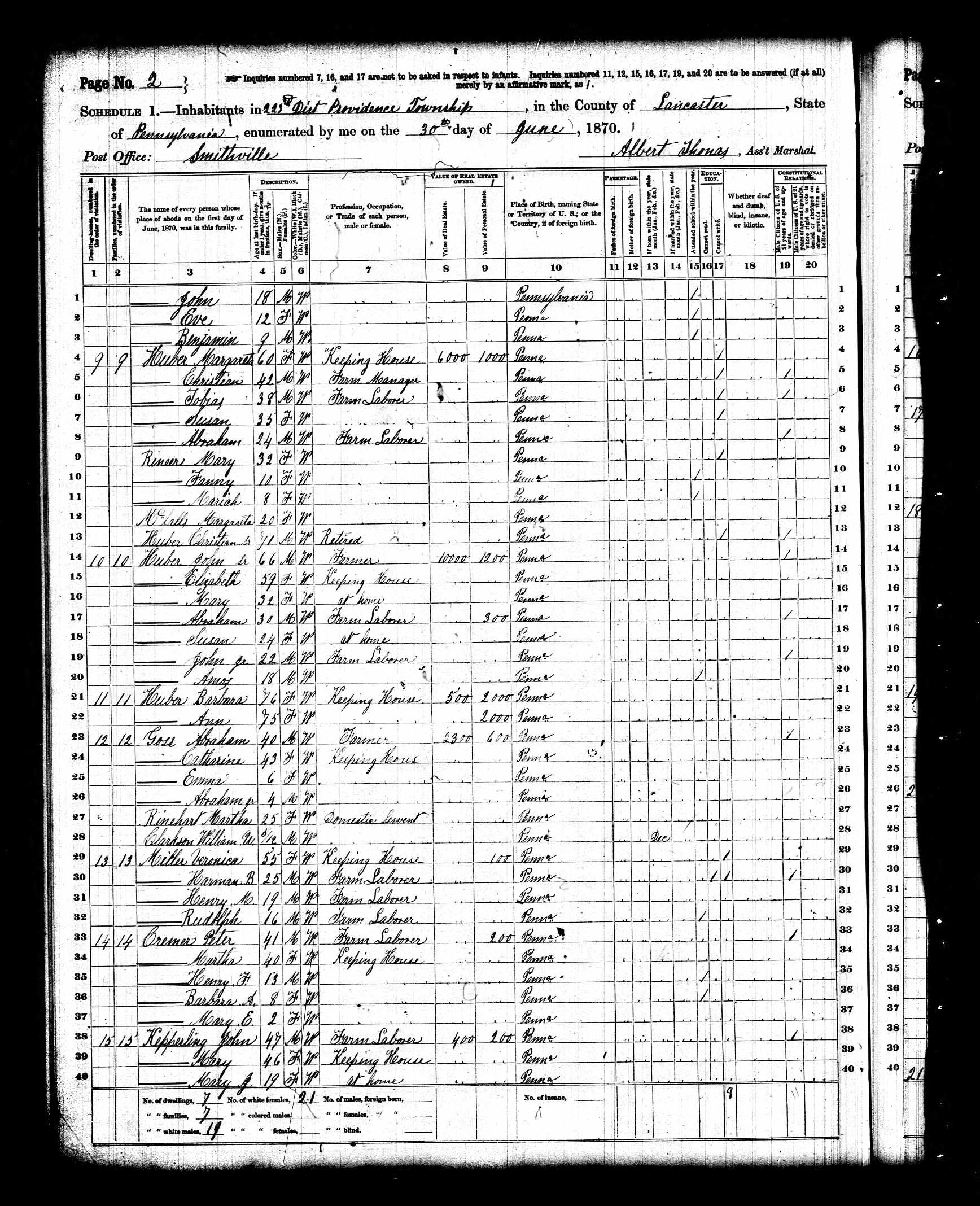
The family is also located near the beginning of the records for Providence in 1870. In this record, Margaret is listed as the head of household. The family includes:
- Margaret Huber, age 60
- Christian Huber, age 42, Farm manager
- Tobias Huber, age 38, Farm laborer
- Susan Huber, age 35
- Abraham Huber, age 24, Farm laborer
- Mary Rineer, age 32
- Fanny Rineer, age 10
- Mariah Rineer, age 8
- Margaretha McFalls, age 20
- Christian Huber Sr., age 71, Retired
Christian and Tobias Huber—John’s executors—are listed with the family. They both died in 1876, and so are not included in the 1880 census. John’s daughter Mary is included with her two daughters this time, while daughter-in-law Catharine Huber and her daughter Emma are not listed. So, it’s likely that Catharine’s husband is still alive.
And indeed, their household was found two pages later:
- John Huber, age 30, Farm laborer
- Catherine S. Huber, age 19
- Emma R. Huber, age 1
Once again, John and Elizabeth Huber’s family is listed directly after this Huber family.
1860 Census
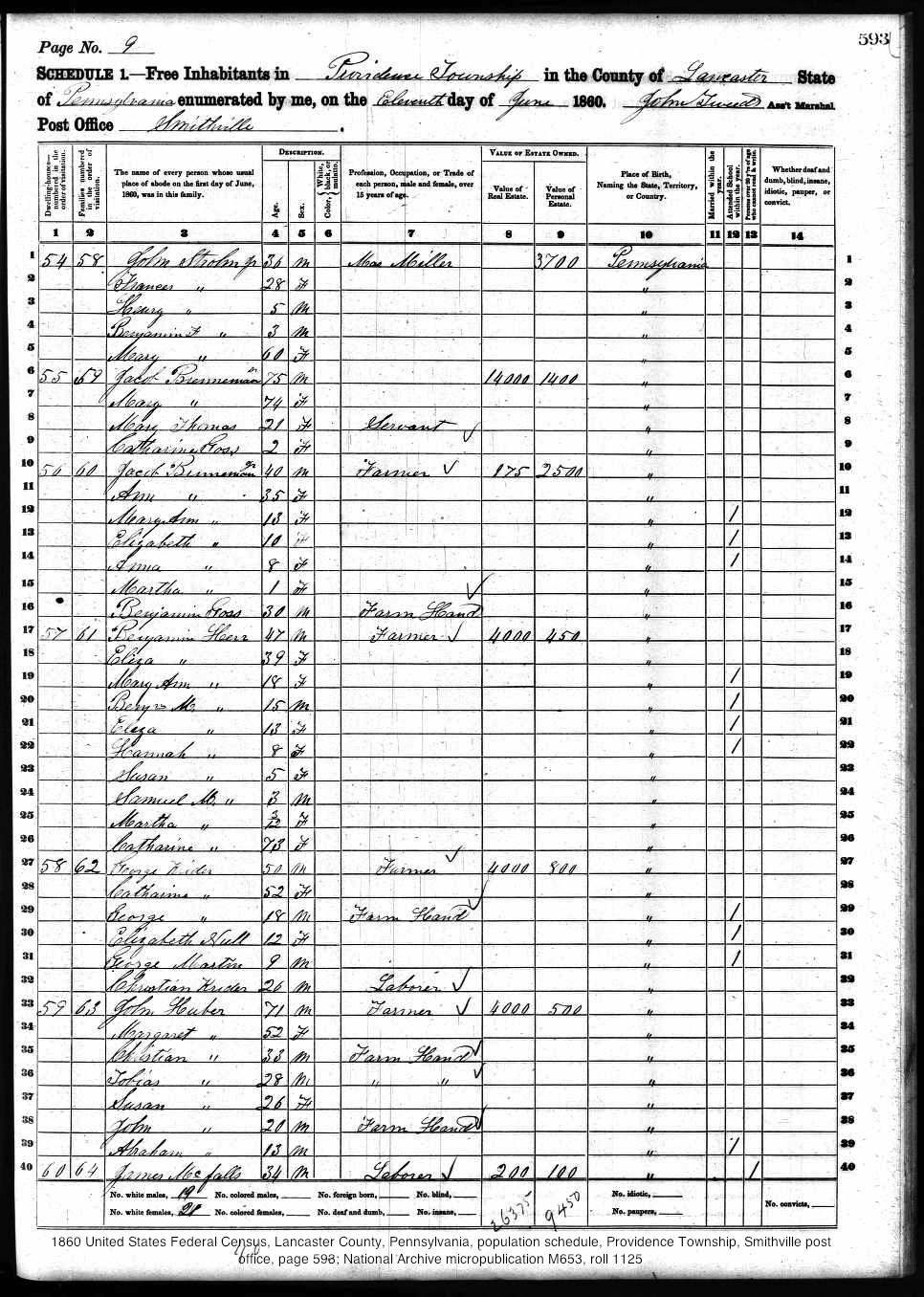
The 1860 census provides our first glimpse of John Huber in these records. His household is included on page nine of the Providence records. It includes:
- John Huber, age 71, Farmer
- Margaret Huber, age 52
- Christian Huber, age 33, Farm hand
- Tobias Huber, age 28, Farm hand
- Susan Huber, age 26
- John Huber, age 20, Farm hand
- Abraham Huber, age 13
Daughter Ann Huber is listed in the next household, headed by her husband James McFalls.
- James McFalls, age 34, Laborer
- Ann McFalls, age 32
- John McFalls, age 8
- William McFalls, age 3
I could not locate Christian Huber Sr. in the 1860 census. However, John and Elizabeth Huber’s household, as expected, is nearby, three households down from John and Margaret Huber’s family.
1850 Census
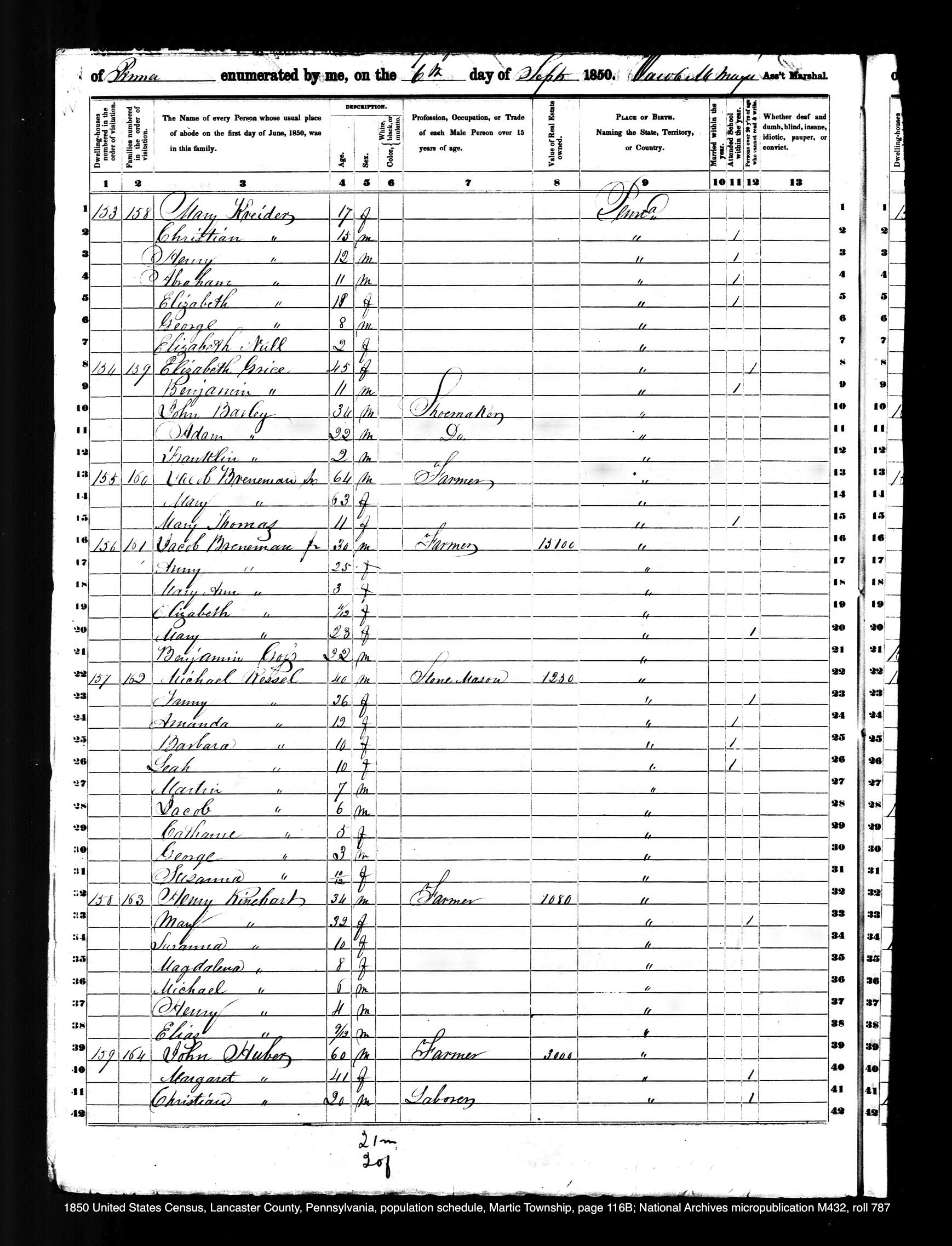
Providence Township was established in 1853, taken from Martic Township. So, John and family are located in the 1850 census for Martic. The family is number 164 and includes:
- John Huber, age 60, Farmer
- Margaret Huber, age 41
- Christian Huber, age 20
- Anny Huber, age 22
- Tobias Huber, age 21
- Susanna Huber, age 17
- Mary Huber, age 13
- John Huber, age 11
- Abraham Huber, age 3
- Daniel Huber, age 1
- James McFalls, age 24, Laborer
- Christian Huber, age 49, Laborer
This census includes all the family seen in the other census records, plus Daniel, age 1. His absence from the 1860 census, leads me to believe that he died prior to 1 Jun 1860. Note James McFalls living in the household. He married Anna Huber sometime in the next year to two years.
Furthermore, the wide age gap between John and his wife Margaret and between sons John Huber and Abraham Huber makes me think that Margaret might not be John’s first wife. She’s old enough to be Christian’s mother, but the gap between children either relates to a previous marriage and death of the spouse or a number of children who died young. We’ll need to see what the previous census shows for more clarity.
Again, as in previous census entries, the John and Elizabeth Huber family is located within three household of John and Margaret’s. Also on this page, however, are two other Huber households: Jacob and Anny Huber and Abraham and Mary Huber.
1840 Census
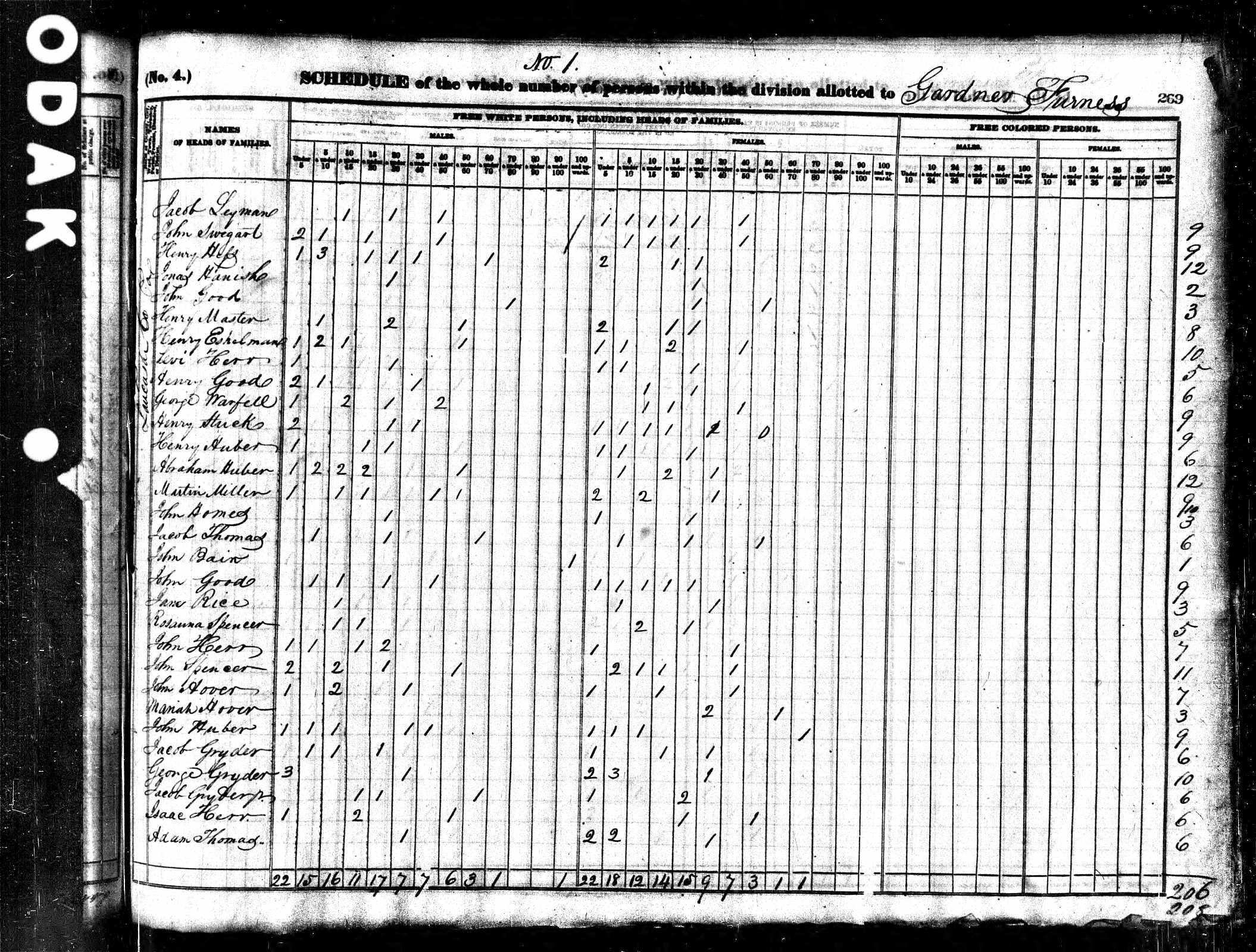
In the 1840 census, John’s household includes:
- John Huber, 40-50 (b. 1790-1800)
- Male, 30-40 (b. 1800-1810) [brother Christian?]
- Male, 10-15 (b. 1825-1830) [son Christian?]
- Male, 5-10 (b. 1830-1835) [son Tobias?]
- Male, <5 (b. 1836-1840) [son John?]
- Female, 70-80 (b. 1760-1770) [Mother?]
- Female, 10-15 (b. 1825-1830) [Annie?]
- Female, 5-10 (b. 1830-1835) [Susanna?]
- Female, < 5 (b. 1836-1840) [Mary?]
If John was married to Margaret, there should be a woman, aged about 31 (26-44), in the household. The fact that there isn’t strengthens my feeling that Margaret was John’s second wife and that Abraham and Daniel were children of this union. If so, John’s first wife died sometime between January (John’s birth) and August 1840 (census).
As in previously viewed census records, John’s brother Christian was living in his household. It also appears that John’s mother, aunt, or other senior female may have been living with him in 1840, too.
1830 Census
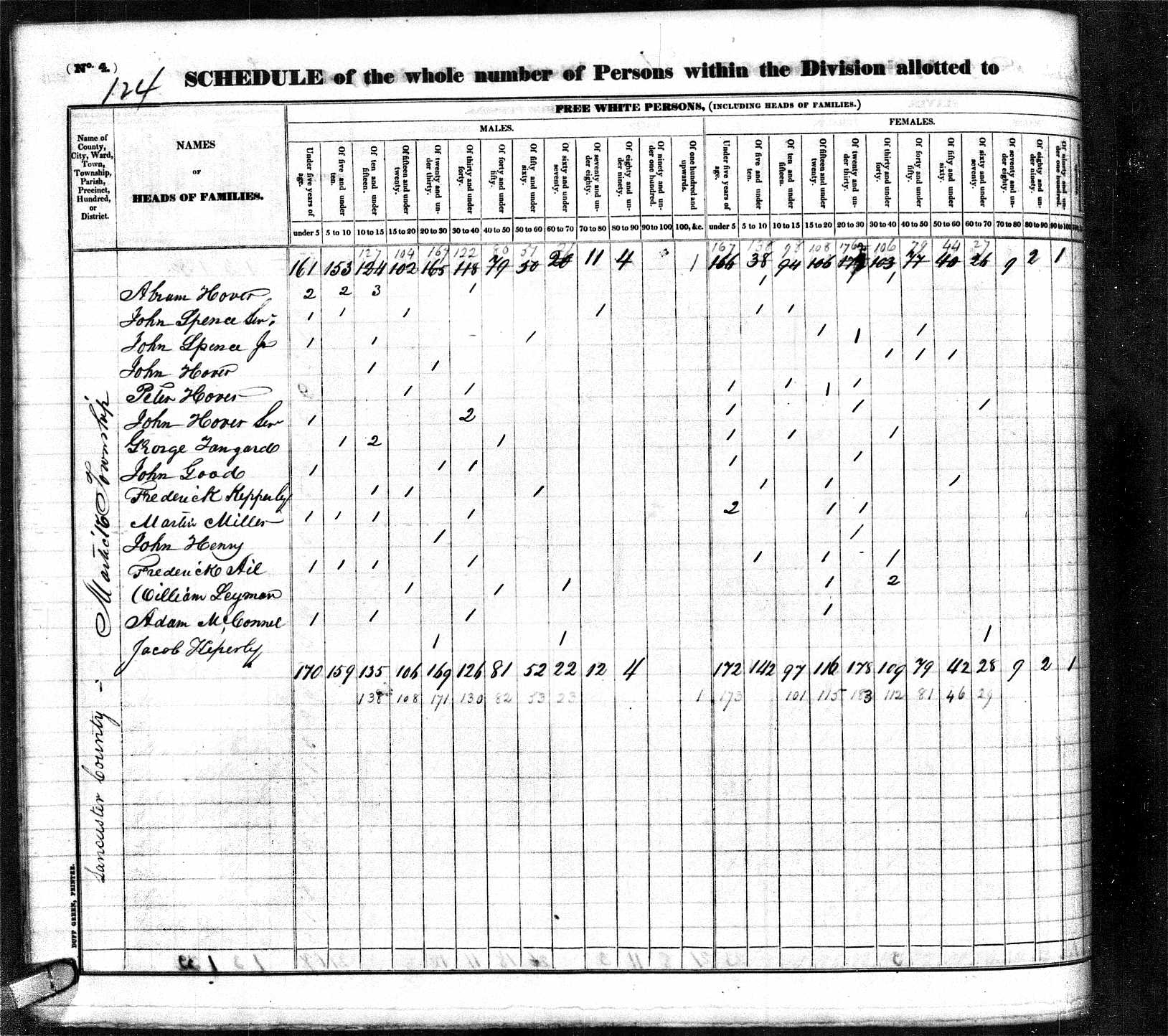
In 1830, John was living adjacent to Peter Huber in Martic Township. His household was composed of:
- John Huber Sr., 30-40 (b. 1790-1800)
- Male, 30-40 (b. 1790-1800) [brother Christian?]
- Male, <5 (b. 1826-1830) [son Christian?]
- Female, 60-70 (b. 1760-1770) [Mother?]
- Female, 20-30 (b. 1800-1810) [1st wife?]
- Female, <5 (b. 1826-1830) [Annie?]
Since his children are under 5 years of age, he likely married sometime around or just prior to 1825. He was probably living at home in 1820. Both his brother Christian and the senior female were living with John in 1830, too. If the female is his mother, his father likely died prior to this census.
Conclusions
Based on the information in the census records, we can flesh out John’s family some. Here’s what it looks like with the new information.
Children of Unknown Huber:
- John Huber, born about 1790 and died 11 Dec 1862, married first Unknown by 1825, married second Margaret (___) by 1847. Margaret (___) Huber died in 1890.
- Christian Huber was born about 1827 and died in 1876; never married
- Ann Huber was born about 1828; married James McFalls
- John McFalls, born about 1851/2
- William McFalls was born about 1856/7
- Tobias Huber was born about 1830 and died in 1876; never married
- Susanna Huber was born 1834 and died after 1892; never married
- Mary Huber was born about 1837; married John Rineer
- Fannie Rineer was born about 1860
- Mariah Rineer was born about 1862
- John Huber was born about 1840 and died 1876; married Catharine (___)
- Emma Huber was born about 1869
- Tobias Huber was born about 1871
- Susan Huber was born about 1874
- Abraham Huber was born about 1847 and died after 1892.
- Daniel Huber was born about 1849 and died before 1860.
- Christian Huber was born about 1800 and died in 1881; never married


